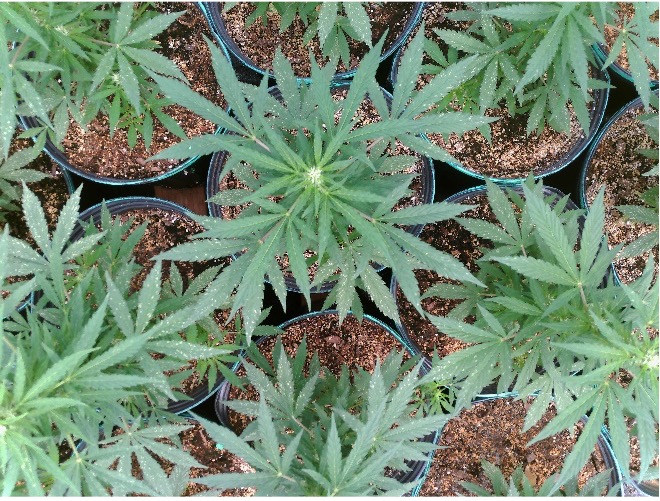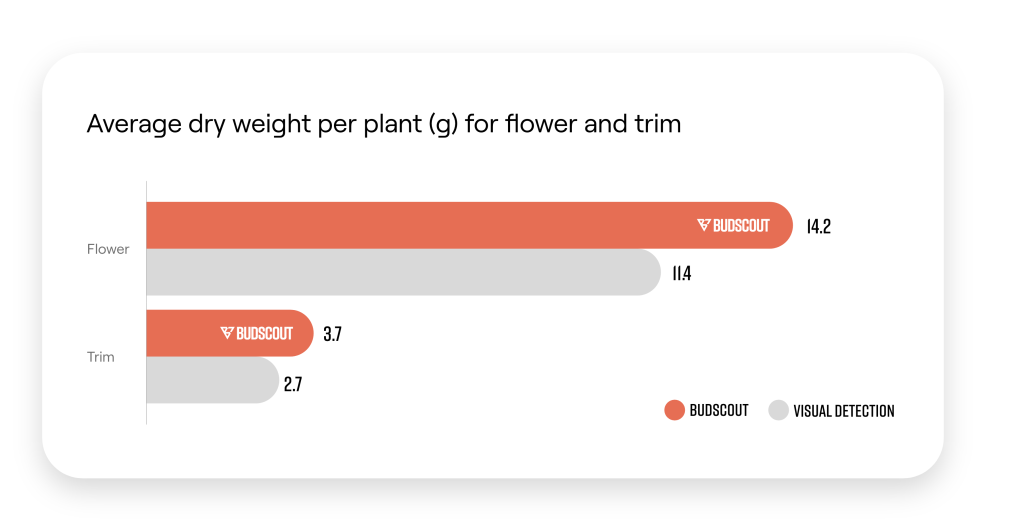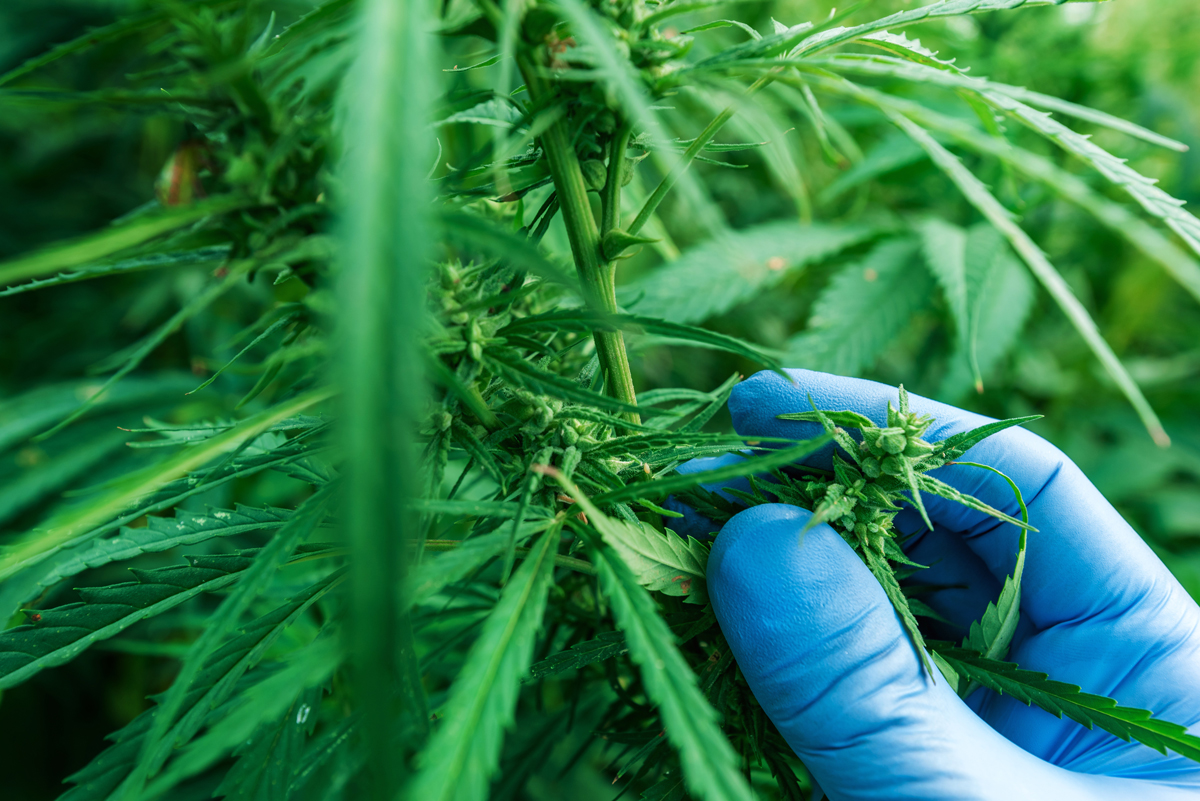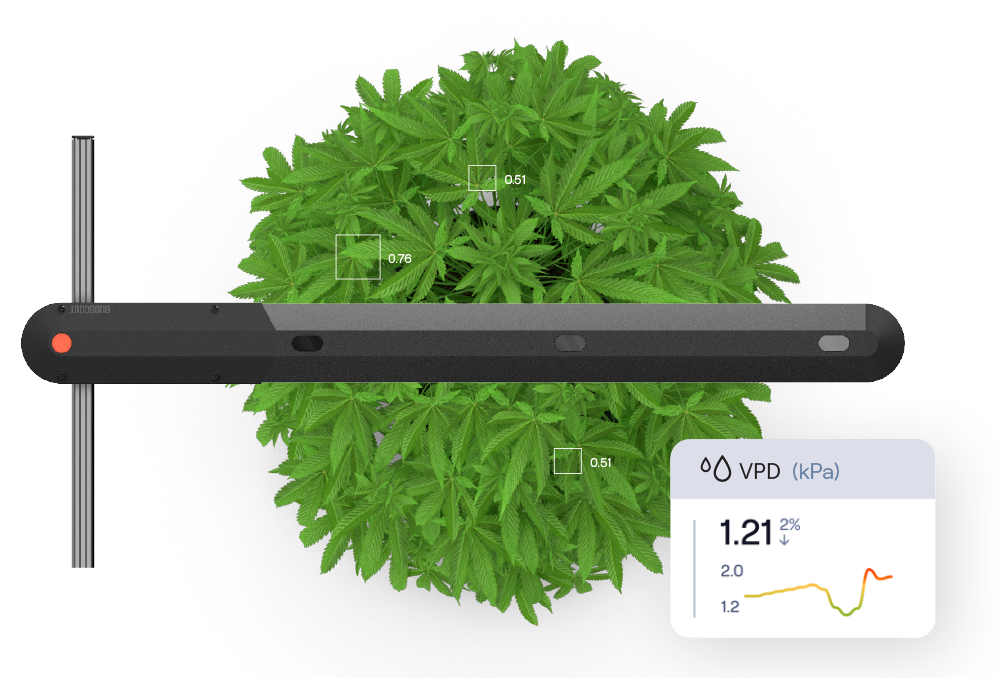At Budscout™ we are all about pioneering AI-enabled agricultural technology and we partnered with the University of Minnesota’s College of Food, Agricultural and Natural Resource Sciences (CFANS) to achieve an impressive 20% increase in crop yield through early stress detection with our robots.
Modern farming has long faced the challenge of optimizing crop yield while ensuring plant health. Traditional methods of stress detection and intervention often rely on visual cues, leaving growers at the mercy of visible symptoms to gauge the plant’s well-being. This is where Budscout™ steps in, utilizing advanced AI and spectral analysis integrated into robotic arms that scan the plants to identify stress in plants before visible symptoms even occur.
The Study Details
The collaborative research endeavor was led by Professor Tom Michaels, a respected figure in horticulture and plant sciences at the University of Minnesota CFANS, and a team of dedicated Budscout™ scientists. The study focused on cannabis plants, which were divided into distinct groups, each subjected to different conditions.
The group of plants supported by Budscout™ technology was nurtured under normal conditions until week 7, at which point nutrient withholding was initiated. The remarkable aspect emerged when Budscout™ detected nutrient stress a full five days before traditional agronomists could spot it visually. This early detection allowed for swift intervention, demonstrating the power of AI and technology in preemptively addressing crop stress.

Image 1: Early Nutrient Stress Identified

Image 2: 5 Days Later with Visual Stress
The Results
The results were nothing short of remarkable. The Budscout™-monitored group not only received early nutrient restoration but also yielded a significant 20% increase in flower yield and an impressive 28% surge in trim yield on average, as indicated by the data.

Professor Tom Michaels lauded the collaboration’s implications, stating,
The results of this experiment underscore the potential of advanced technology in agriculture. Budscout’s ability to detect plant stress early is a significant leap forward in optimizing yields and improving overall plant health.
Experimental Conditions
Plant cultivar was the auto-flowering Atlas Wilhelmina (hemp) grown in a greenhouse with approximately 13 hours of daylight. Each seedling was transplanted into a 3 gal. plastic pot containing Pro-Mix BRK. Pots watered with 10 gal mixture of Jack’s parts A and B (4g/gallon Jack’s 5-12-26 and 2.5g/gallon Jack’s 15-0-0) every other day for 6 weeks. Added yellow insect trap cards at week 5 and applied Mesurol 75-W @ 0.16 oz/gal, & Enstar AQ @ 0.32oz/gal. Incorporated Osmocote into top 2-3 inches of soil by hand. Disrupted all other pots top 2-3 inches of media similarly to universalize any potential root damage. Last nutrient delivery to all plants at week 6 although water continued to be delivered. When Budscout™ detected stress issues 14 days post removal of nutrients, those plants were given a mixture of 78 grams Jack’s 15-9-12 (catch-up dose) as were the control plants once the human grower detected stress 6 days following Budscout™. All plants were then grown under the same conditions until harvest at week 12. Plants were separated into flower, trim, or stalk parts, dried then weighed 7 days post-harvest.
Beyond the immediate benefits of increased yield, this partnership holds promising implications for the future of agriculture and cannabis. With pests, diseases, and molds posing constant threats to crop health, early stress detection tools like Budscout™ could pave the way for proactive solutions that safeguard yield and quality.
While the study’s focus was on nutrient stress detection, we don’t plan to stop there. We are actively engaged in further research projects that leverage AI and spectral analysis for early detection of issues like Hop Latent Viroid and precise targeting of infected plants.
As the agricultural landscape continues to evolve, collaborations like the one between Budscout™ and University of Minnesota CFANS shed light on the potential of technology to revolutionize farming practices, ensuring both economic viability and sustainability.




